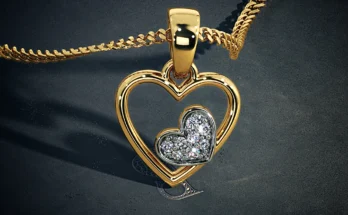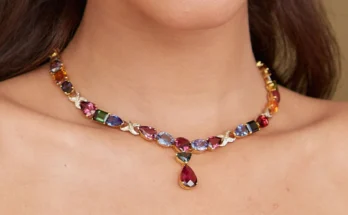Choosing the perfect engagement ring is a significant and exciting milestone. One of the key decisions is selecting the right diamond—one that not only shines brilliantly but also holds timeless beauty. GIA diamond engagement rings are among the most sought-after choices for couples due to their exceptional quality and trustworthy certification. If you’re seeking a diamond with minimal inclusions, understanding the factors involved will help ensure your engagement ring is as flawless as possible.
What Is a GIA Diamond?
A GIA (Gemological Institute of America) diamond refers to a diamond that has been graded and certified by the GIA, one of the most respected organizations in the gemstone industry. This certification assures that your diamond has been evaluated for its key attributes: the 4Cs—Carat, Cut, Color, and Clarity. Each of these factors plays a significant role in determining the overall appearance and value of the diamond.
When shopping for GIA diamond engagement rings, you can be confident that you are receiving an accurately graded stone that matches the description on the certificate.
Understanding Inclusions
Inclusions are natural imperfections or flaws within a diamond. These can include tiny crystals, fractures, or other markings that occurred during the diamond’s formation. While inclusions are common in nearly all diamonds, the goal is to find a stone where these flaws are minimal or barely noticeable to the naked eye.
Inclusions are categorized by size, type, location, and visibility. The fewer inclusions a diamond has, the higher its clarity grade, which greatly impacts the beauty of the diamond.
The Importance of Clarity in a GIA Diamond
The GIA clarity grading scale is crucial when selecting a diamond. It ranges from “Flawless” (FL), which signifies no visible inclusions under 10x magnification, to “Included” (I), where inclusions are visible to the naked eye. Here’s a quick breakdown of the GIA clarity scale:
- FL (Flawless): No inclusions or blemishes under 10x magnification.
- IF (Internally Flawless): No internal inclusions; only external blemishes.
- VVS1/VVS2 (Very Very Slightly Included): Inclusions are extremely difficult to detect under 10x magnification.
- VS1/VS2 (Very Slightly Included): Minor inclusions that are somewhat difficult to see under magnification.
- SI1/SI2 (Slightly Included): Noticeable inclusions that may or may not be visible to the naked eye.
- I1/I2/I3 (Included): Visible inclusions that affect transparency and brilliance.
When selecting GIA diamond engagement rings with minimal inclusions, look for diamonds in the VS range above. These diamonds will have few, if any, imperfections visible without magnification, ensuring a clean and radiant appearance.
How to Choose a GIA Diamond Engagement Ring with Minimal Inclusions
- Clarity Grade: Aim for a clarity grade of VS1 or higher. At this level, inclusions are so small that they are difficult to spot without a jeweler’s magnification. Choosing a diamond in this range offers a great balance between clarity and price.
- Inclusion Placement: If you’re considering diamonds in the SI1 or SI2 clarity grades, look for inclusions located near the edges or prongs, where they can be hidden by the ring setting. Some inclusions are less visible depending on their location, and a skilled jeweler can help you find the best setting to mask any imperfections.
- Diamond Shape: Certain diamond shapes, like round brilliant cuts, are better at hiding inclusions due to their facets and brilliance. If you’re concerned about clarity, opting for a round brilliant GIA diamond engagement ring could be a smart choice.
Final Thoughts
Selecting a GIA diamond engagement ring with minimal inclusions is a thoughtful way to invest in a lasting symbol of love and commitment. By focusing on clarity grades, inclusion placement, and shape, you can find a stunning diamond that exudes brilliance and beauty. GIA diamond engagement rings are an ideal choice for couples seeking a high-quality, certified gemstone with the confidence that it will stand the test of time.
Whether you’re looking for a flawless diamond or one with minor, virtually undetectable inclusions, the GIA certification guarantees you’ll receive a gem that’s nothing short of extraordinary.




